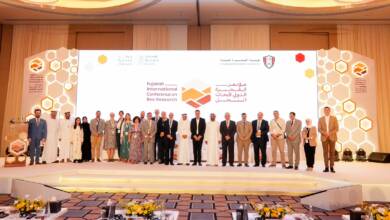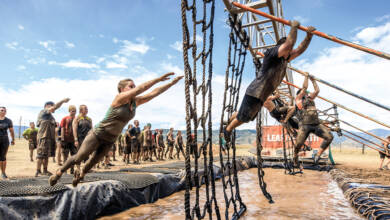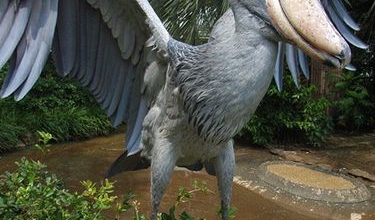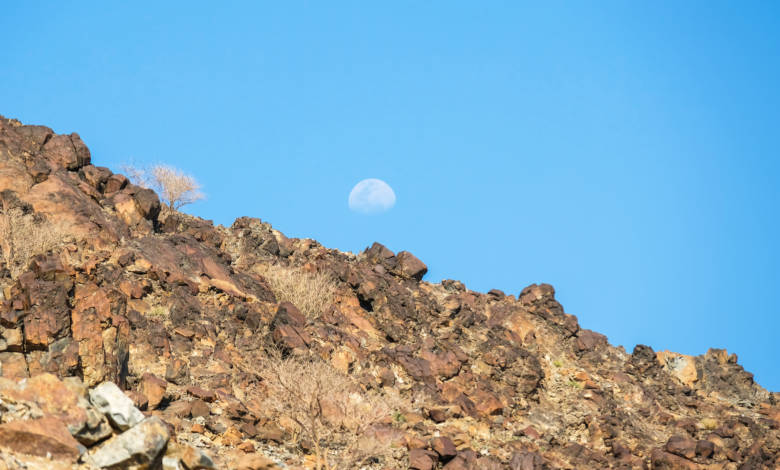
The Al Hajar mountains (which translate to the Rocky or Stone mountains) are the highest mountain range in the eastern Arabian peninsula. Spanning the 2 countries of Oman and the UAE, they stretch 700km along the Gulf of Oman. At 3009m the highest point in the range is Jebel Shams, located about 240km West of Muscat, Oman. Fujairah’s highest point is Jabal Al-Mebra, also known as Jabal Yibir at 1,727 m
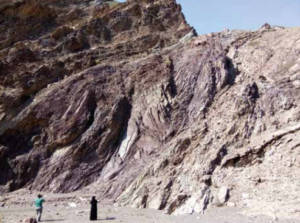
Their formation is due to plate tectonics. The Eurasian and Arabian plates moving against each other. These are currently stable plates and there is very little chance of significant earthquake’s in the region. The Arabian Plate (which includes Fujairah) is moving north relative to the Eurasian Plate at about 2–3 cm per year.
The mountains were formed throughout the Mesozoic period, starting their formation 245 million years ago and taking a mere 180 million years for completion. In this time, they will have witnessed the Triassic, Jurassic and Cretaceous periods and the evolution of dinosaurs, mammals and birds. Unfortunately, they will also have witnessed the dinosaur’s demise.
There is no evidence (such as fossils) that dinosaurs inhabited this part of the world. Mankind’s evolution wouldn’t be for another 60 million years after the Hajar mountains formation. The rocks that form the Hajar mountains were originally on the sea floor and covered by between 500m and 1000m of sea water. The sea level didn’t drop but the plates pushing against each other forced the rocks up and formed the mountains we know today.
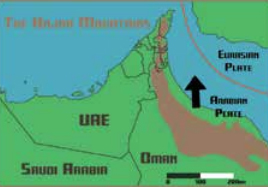
About 75% of Fujairah is mountainous. Coastal planes, beaches and desert make up the remaining 25%. In the west of Fujairah and stretching across all the other 6 Emirates is desert.
A brief history of a desert’s formation is that it is sand formed from rocks that have been eroded and exposed to intense weathering for a long time, with no rain and extremely high temperatures. The desert of the UAE is younger than the Hajar mountains.
There are 3 main categories of rock in Fujairah
Igneous
The igneous rocks are formed from the cooling of lava magma. Shamal chert is prevalent in the north of Fujairah and is a volcanic rock formed from lava. There were no volcanos in the area but merely breaks in the earth’s surface in which the lava flowed before cooling.
You might be lucky enough to find a crystal in the mountains. This might be a piece of quartz and it is a crystal not a rock. They are formed in nature when liquids cool and start to harden. These crystals will have formed as a result of the liquid rock, called magma, cooling.
Sedimentary
Sedimentary rocks are types of rock that are formed by the accumulation or deposition of mineral or organic particles at the Earth’s surface, followed by cementation. Sedimentary rocks found in Fujairah are limestone, chert, shale and mudstone.
The limestone quarried in Fujairah has multiple uses and can be used in the production of paper, pharmaceuticals, chicken feed, steel, iron, fertilizer and cement. Cement used in the construction of the Burj Khalifa originated in Fujairah, this was because of its reputation in being the finest, purest (high grade) limestone. The grey limestone in particular is the best source for cement. This limestone as cement and a raw material is exported to India and all over Gulf region.
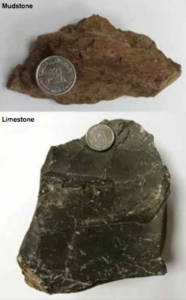
Metamorphic
Metamorphic rocks started out as some other type of rock, but have been substantially changed from their original igneous, sedimentary, or earlier metamorphic form. Metamorphic rocks form when rocks are subjected to high heat, high pressure, hot mineral-rich fluids or, more commonly, some combination of these factors. An example of this is marble rock formed when limestone is exposed to high temperatures and pressures.
As a general rule, the rocks in Fujairah can be classified by region. • In the north the rocks are hard igneous and sedimentary. • In the central region they are largely metamorphic rocks. • In the south are they are ophiolites and mostly igneous Caves are more prevalent in the North and formed within sedimentary rocks.
This article was published on the Fujairah Observer Magazine, December 2020 Issue.
To read the full magazine please click on the link:
https://www.fujairahobserver.com/wp-content/uploads/2020/11/10-December2020.pdf


